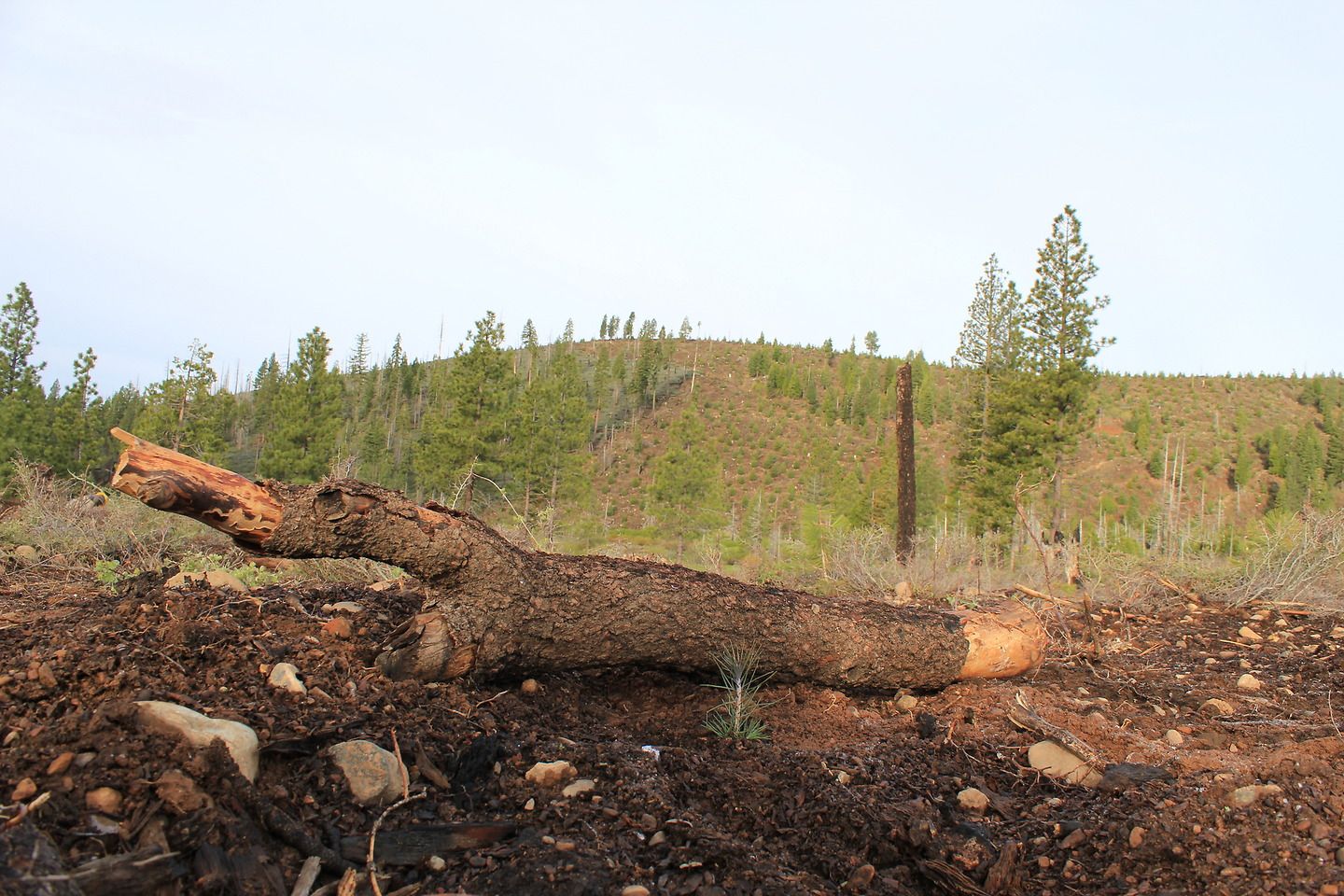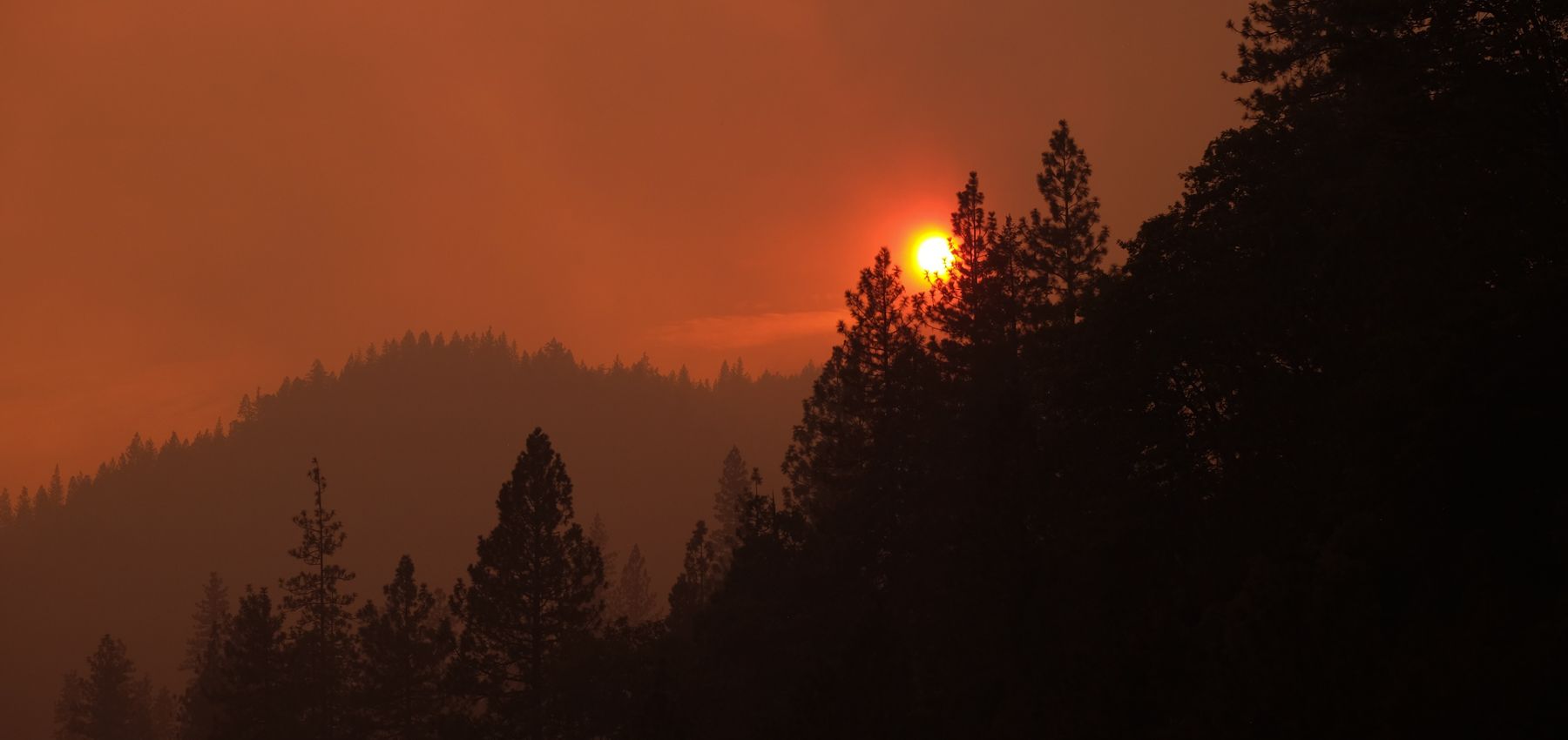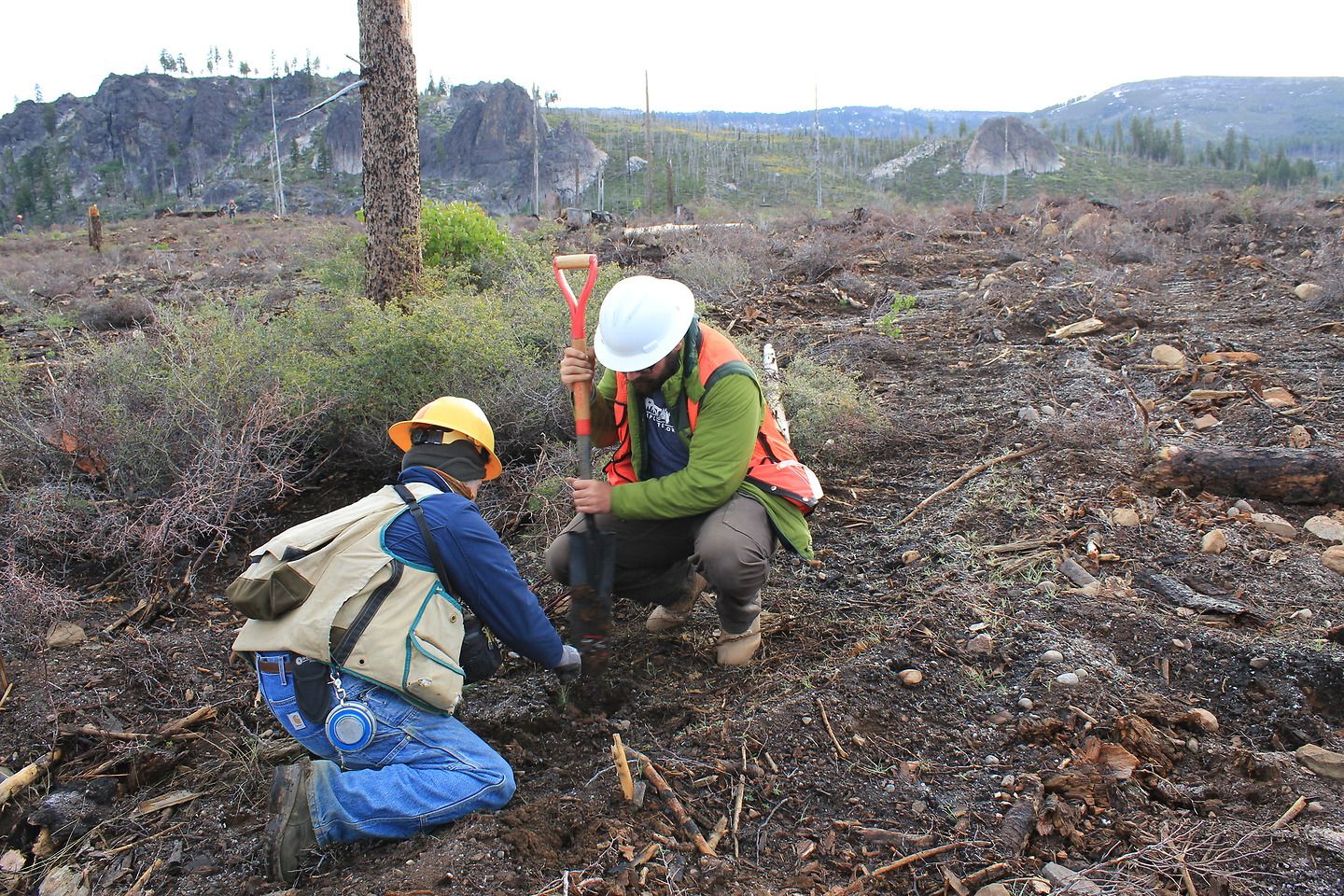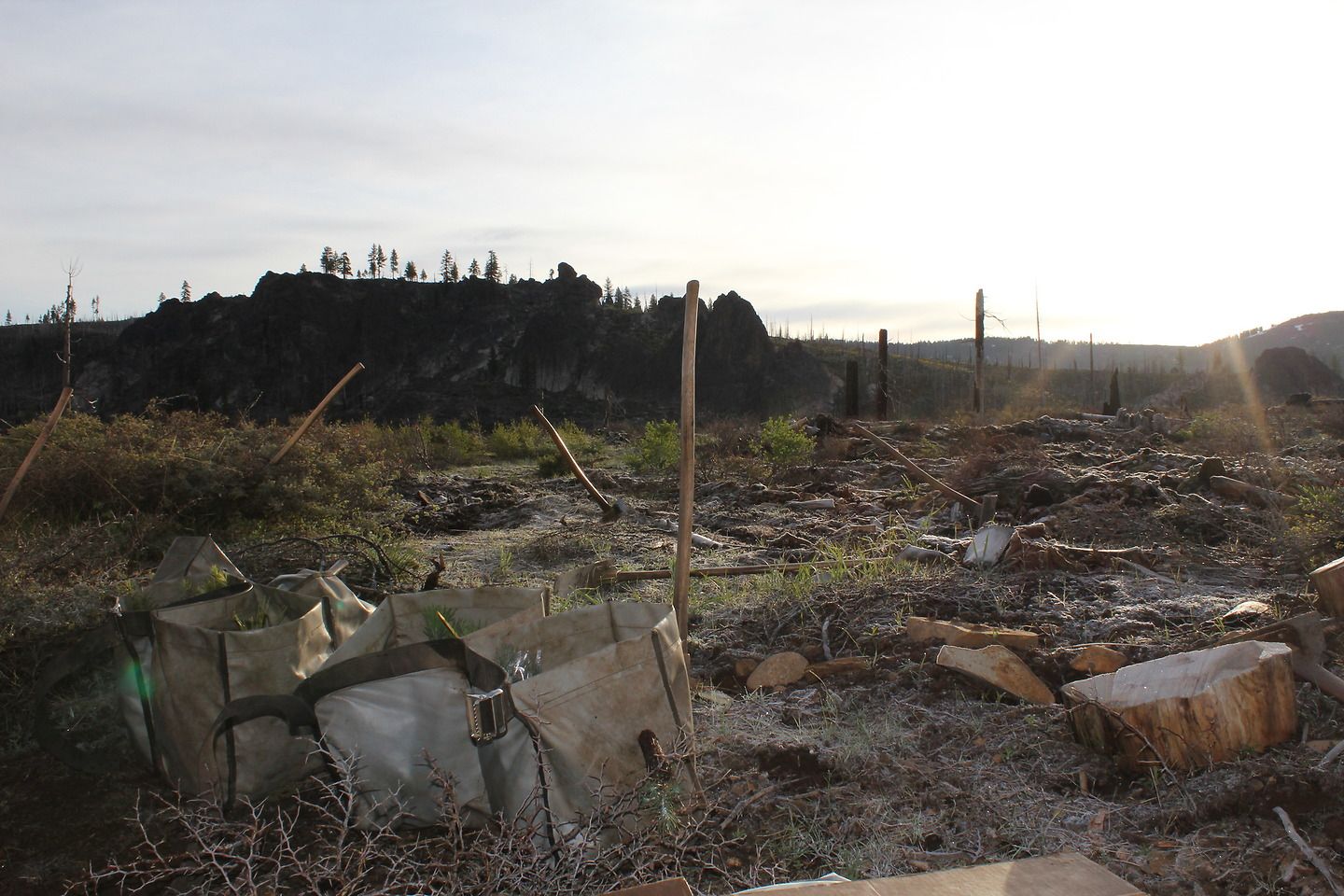Planting Site Basics
Planting Site: Plumas National Forest, California
Country: USA
Site Status: Archived
Forest Type: Temperate Dry
Planting partner: One Tree Planted, US Forest Service
Where Are We Planting?

Plumas National Forest is located in Northern California at the northern end of the Sierra Nevada Mountain range.
What Trees Are We Planting?

At our planting site in California, the focus was to re-introduce conifer tree species native to the area. One such tree is the sugar pine (Pinus lambertiana), the tallest and largest of the pine trees. The sugar pine has the longest cones of any conifer, and their equally large seeds make them an important food source for chipmunks, jays, and black bears. The incense cedar (Calocedrus decurrens), is another conifer found in this area that is extremely tolerant of drought and fire and usually spreads rapidly following low-intensity fires. In addition to these species, we also planted red fir (Abies magnifica), ponderosa pine (Pinus ponderosa), and Jeffrey pine (Pinus jeffreyi) to ensure a diverse and resilient forest.
Why Plant Dry Temperate Forests In California?

In July 2007, the Antelope Fire in Plumas County burned roughly 21,500 acres of land, 13,000 of which experienced high-severity burning. Just two months later in September, the Moonlight Fire burned into the Antelope Complex consuming an additional 65,000 acres. These two devastating fires transformed large portions of the landscape into shrublands that became susceptible to high severity fires. Although these fires happened over ten years ago, climate change, changing fuel dynamics, and extreme fire behavior continue to put forested areas like these at risk.
This is cause for concern, as California’s forests provide innumerable benefits, including clean water, air, recreation opportunities, timber, wildlife habitat, and of course, beautiful scenery. Healthy forests also play a critical role in fighting our ongoing battle against climate change. Sadly, years of drought and a large-scale bark beetle infestation have seriously damaged these precious forests. This has been further impacted by 2017’s record-breaking wildfire season which burned more than 1.5 million acres of Californian forests — an area just greater than the state of Delaware. As a result, roughly 129 million trees need to be restored to these areas if the forests are to thrive like they once did.
The two fires that burned through Plumas County transformed the landscape. Historically, this area had been dominated by conifers and had only faced frequent low severity fires in the past. However, these high severity fires destroyed massive amounts of vegetation and altered the hydrology or flow of water throughout the landscape. After the fire, the area saw an increase in runoff, peak flows, and flooding when it rained, causing ongoing issues for the area’s watersheds. Concerns that post-fire conditions were impairing the resiliency of forest resources and infrastructure inspired the development of the Moonlight Fire Area Restoration Strategy.
The goal of the Moonlight Fire Restoration Strategy was to (1) increase awareness around forests devastated by wildfires and (2) maintain, create, and promote healthy and resilient ecosystems. As climate change and human behaviour continue to alter ecosystems, it’s important that restoration prioritizes creating adaptable ecosystems that can face future changes.
The Moonlight Fire left behind very little diversity in tree species. Because the grouping of trees in this area was so dense, there was an increased risk that they would die from bark beetles in the event of an insect outbreak. Our goal was to plant diverse species of trees to support a landscape well-adapted to natural disturbances and one that could be more responsive to changes in climate.
Who’s Planting With Us?

The Moonlight Fire Area Restoration Strategy was a collaboration between the government, charities, and private organizations. We partnered with One Tree Planted who worked in conjunction with The US Forest Service. One Tree Planted is a charity with a mission to help global reforestation efforts. The organization is built on a network of individuals, businesses, and schools who either donate monetarily or volunteer to help plant trees around the world. Under the Department of Agriculture, the US Forest Service is responsible for all maintenance and management of National Forests.
What’s The Impact?

Environmental:
- Provide stability to the land and protect against erosion and encourage soil regeneration.
- Protect biodiversity and habitat by regenerating forests quicker.
- Increase forest resiliency and adaptation to climate change through diverse regeneration.
- Protecting global forested ecosystems.
- Sequestering carbon to help combat climate change.
Social:
- Protect and regenerate parkland for the community.
- Protect local watersheds to support local water quality and quantity for drinking and power generation.
Related UN Sustainable Development Goals (SDGs)
The UN’s Sustainable Development Goals (SDGs) are a collection of 17 interlinked global goals that are a “blueprint to achieve a better and more sustainable future for all.”
Here are the SDGs that we addressed at our Plumas National Forest planting site:
#11 – Sustainable Cities and Communities – Make cities and human settlements inclusive, safe, resilient, and sustainable.
# 13 – Climate Action – Take urgent action to combat climate change and its impacts by regulating emissions and promoting developments in renewable energy.
#15 – Life on Land – Protect, restore and promote sustainable use of terrestrial ecosystems, sustainably manage forests, combat desertification, and halt and reverse land degradation and halt biodiversity loss.
Want to see where your trees are planted? Register your trees now.

